- Home
- Encyclopedia
- Black Kettle, Black Elk and The Wyoming State Fair
Black Kettle, Black Elk and the Wyoming State Fair
In October 1903, six Oglala Lakota Sioux and two white men died in an armed confrontation between a sheriff’s posse and a small band of tribal people on Lightning Creek, about 50 miles northeast of Douglas, Wyo. Some of the Oglalas had a pass from the agent at their Pine Ridge Reservation in South Dakota to travel off the reservation to gather nuts, berries and roots. They may also have been hunting antelope, potentially illegal under relatively recent state laws; the Weston County sheriff’s initial attempt to arrest members of the band was over alleged game violations.
The surviving posse men claimed the Indians shot first; Oglalas, interviewed later on Pine Ridge by Wyoming’s U.S. attorney, said they were ambushed and the posse first opened fire from a gulch. Nine Oglala men were charged with murder, but the charges were dropped after the same attorney convinced a state judge there would be no way for either side to prove which had shot first.
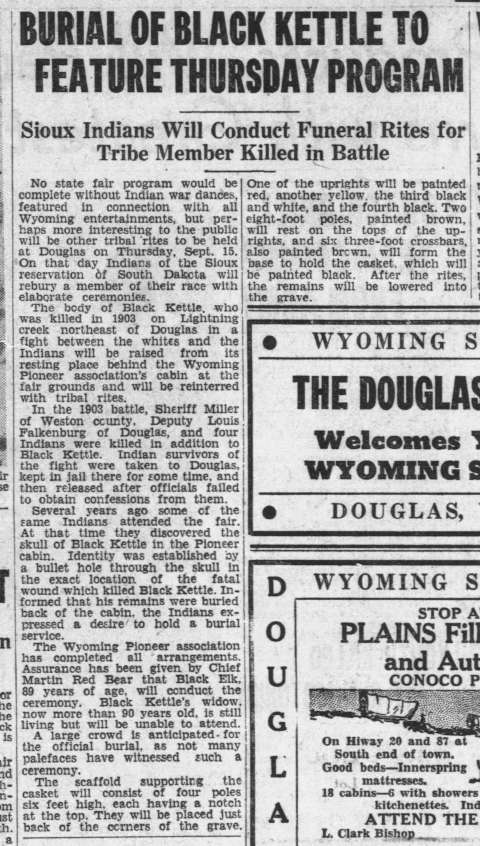
Special Indian Agent Charles McNichols noted in his report at the time that the incident, resulting in part from a “local sentiment of race hatred, has stained a page in Wyoming’s history.”
But that wasn’t the end of the story. More than 30 years later, both sides seem to have made a genuine effort at a kind of reconciliation, with a little show business thrown into the mix.
Collecting Black Kettle’s bones
After the fight, the Oglalas buried their dead at the site of the battle. About a year later, Lou Cook, an area sheep rancher, collected the bones and skull of Black Kettle, one of the leaders of the band, who had been shot through the head. In the late 1920s, area ranchers donated these remains to the Wyoming Pioneer Association, which ran the museum in Douglas, Wyo., on the grounds of the Wyoming State Fair.
The remains were donated to the association “in a gunny sack,” according to L. C. Bishop, a civil engineer with a passion for local history and historic trails.
“I was secretary of the Association at the time,” Bishop remembered years later, “and did not like to have a sack of human bones in our collection so placed the skull with the bullet hole through it in a show case and made a box and buried it behind the Pioneer Cabin with a small headstone . . .” The stone, still there, is inscribed
Indian
Killed By
John Owens
1903
Johnnie Owens, a deputy sheriff of Weston County, was one of the men in the posse.
The remaining bodies were left where they had been buried.
“Steps and memory”
About 1936, some Sioux men from the reservation traveling in two old cars visited the ranch home of a Mr. Thomson, whose son, Dave, many decades later wrote out an account of this event. The men had come to request permission to search Thomson’s property for the bones of their comrades who had been buried after the fight at Lightning Creek.
Dave Thomson wrote, “There was two fellows that had been there before and they did all the work. One would find a tree or where a tree had been, then step to another tree. If the steps didn’t come out right he would try another route. After a try or two and the right space between trees was found the second Indian paced off some steps and would dig. He (dad) claimed every time he dug, he struck bones. … [They exhumed] 3 or 4 bodies, which is consistant [sic] to any confirmed killed. The fact that [after the fight] they came back and buried their comrades in the eve. light or even the darkness and 33 years later could find them with only steps and memory never ceased to amaze [my dad].”
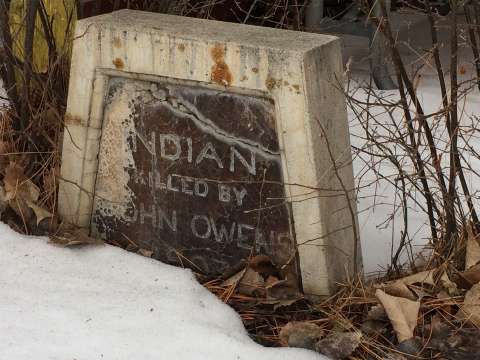
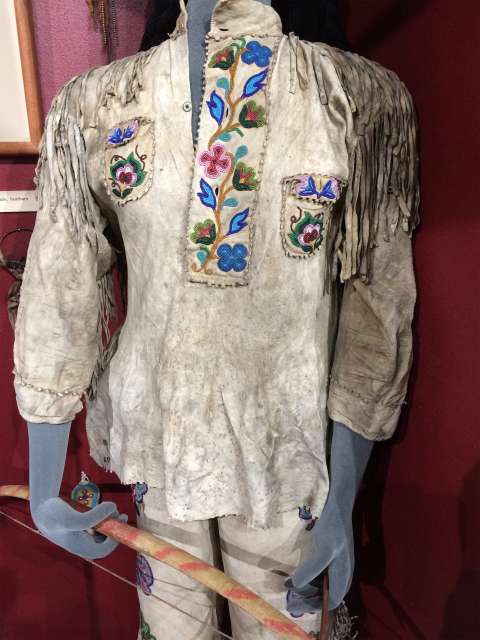
Oglalas identify Black Kettle’s skull
About that time or possibly a year later, during the Wyoming State Fair, some men from the Pine Ridge Reservation visited the fair and saw Black Kettle’s skull on display, and identified it by the bullet hole. From L.C. Bishop, they learned that Black Kettle’s other bones were buried on the State Fair site. They noted that Black Kettle’s widow was still alive and would like to have her husband’s remains returned; they requested permission to take all of his bones back to the reservation where they could be properly buried.
Bishop, also by then chairman of the Historical Sites Committee of the Wyoming State Historical Society, suggested instead re-burying Black Kettle’s remains on the fairgrounds the following year, with the appropriate ceremony. The Oglalas agreed. The reburial was scheduled for Sept. 15, 1938, while the state fair was in full swing.
Black Elk
The Douglas Budget reported earlier that month that the burial service would be conducted by “Black Elk, an Indian 89 years old.” Representatives of the Pine Ridge and Rosebud reservations have confirmed to the museum in recent years that the speaker was in fact Black Elk the famed Oglala medicine man and holy man, whose 1931 autobiography in collaboration with the Nebraska poet John G. Neihardt, Black Elk Speaks, has become a classic in world literature about religion.
Black Elk in fact was 75 years old in 1938. At the age of nine, he had a vision that gave him great spiritual power throughout his life. As a young teenager, he fought with the Sioux against Custer’s troops on the Little Bighorn. In the late 1880s he and dozens of other Oglalas traveled with Buffalo Bill’s Wild West to England, France and Italy and performed before Queen Victoria. A year after his return he witnessed the massacre by U.S. troops of hundreds of Miniconjou and Oglala Lakotas at Wounded Knee on Pine Ridge. In the first two decades of the 20th century he became an active, devout Roman Catholic and served as a catechist, or lay religious teacher, on the reservation.
By the time he collaborated on the book with Neihardt, he was nearly blind and suffered from chronic tuberculosis. Yet he was returning publicly to more traditional ways and, apparently, hadn’t forgotten showmanship he’d learned from Buffalo Bill. As early as 1916 he was among 52 Oglala men, women and children who danced in the annual Frontier Days parade in Cheyenne. In the mid-1930s, he began working every summer with the Duhamel family, which owned a tourist attraction, “Sitting Bull Crystal Cavern” on the road between Rapid City and Mount Rushmore. The Duhamels were descendants of a French-Canadian trader who’d first begun doing business with Lakotas in the 1850s.
For about 10 years, Black Elk and a few dozen friends and relatives lived each summer in tents a few miles from the site. At the caverns, they performed three shows daily for the tourists, one in the morning and two in the evening, enacting traditional Oglala ceremonies and dances for the tourists. The Duhamels gave them 25 percent of the gate. Black Elk organized the people, planned the dances and was the main performer. The Red Bear family were among the regular participants; the Douglas newspaper article mentions that “Chief Martin Red Bear” had sent word that it would be Black Elk conducting the funeral service at the State Fair in Douglas.
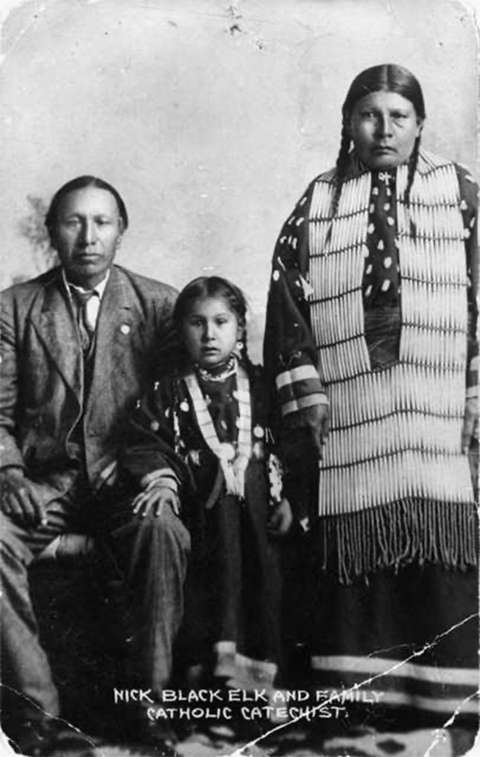
Burial rites, with traditional wailings and lamentations by the women, were among the ceremonies that Black Elk re-enacted for the tourists; one or another of his grandchildren, lying on a scaffold, would portray the sick or the dead.
The reburial
Carpenter Rick Anthony of Douglas, meanwhile, built the scaffold for the coffin on the grounds of the Wyoming State Fair, almost certainly to the Oglalas’ specifications: four six-foot high poles, painted red, yellow, black-and-white and black, respectively. There were also two eight-foot brown crossbars and six three-foot crossbars for the coffin to rest on. Black Elk notes many times in his book that black is the color of the west, where thunder clouds come from; white is the color of the north and its cold winds and snows; red is the color of the east and the morning sky, and yellow is the color of the south, sun and summer.
“After presents, food, clothing and necessary equipment were placed on the coffin,” a look-back column in the Wyoming Pioneer recalled three years later, “to conveniently guide and protect the chief while en route to his happy hunting grounds, a rather weird ceremony was concluded, and the remains of Chief Black Kettle were lowered into the grave.” About 100 Indians were on hand, the Pioneer noted. And there would have been a large crowd of tourists and other fairgoers.
The wailing that to Oglala ears would have been familiar sounded to L.C. Bishop like something else. “When the widow saw the skull with the bullet hole, she started howling like a coyote. … [She] continued her lamentations until the ceremony the next day.” He continued, “[A]n old Chief stood on the pile of earth excavated from the grave—"this would have been Black Elk—"and made signs to the Great Father and through his interpreter said something like this: ‘Chief Black Kettle was a great Chief and a good man. He had done no wrong by killing antelope on lands of the Indians who had a treaty allowing them to hunt.’” That statement was true enough, though in 1896, just seven years before the Lightning Creek fight, the U.S. Supreme Court ruled that state game laws had supremacy over tribes’ treaty-based hunting rights.
Bishop said Black Elk added, through his interpreter, “’The white deputies were drunk and were killed by Black Kettle in self defense.’” That couldn’t have been true, Bishop added, as he had known Louis Falkenberg, the slain deputy, well, “and never knew him to take a drink.” But Bishop says nothing about the rest of the posse.
Bishop concluded, “[The Indians] seemed happy to be recognized and went home satisfied.” That, too, may have been true, but the remains of Black Kettle stayed in Wyoming.
The West had changed between Black Kettle’s death and his reburial 35 years later. With more and more paved roads and automobiles, cars brought tourists to Mount Rushmore from across the nation and to the State Fair from across Wyoming. Black Elk was returning to traditional ways. But he understood that being public about it could bring in some revenue from tourists and at the same time improve White people’s understanding of the Sioux. L.C. Bishop was skeptical of the Oglalas, but not hostile to them the way an earlier generation of White people had been, including Wyoming’s governor, congressman and U.S. senator, in 1903. There were still a few old Indian Wars veterans around—Black Elk was one of them—but both sides, we can hope, wanted to do the right thing by giving an old war veteran a proper burial.
(Editor’s note: Special thanks to Jenna Thorburn and the staff at the Wyoming Pioneer Memorial Museum on the grounds of the Wyoming State Fair in Douglas for their archives and their help on this article.)
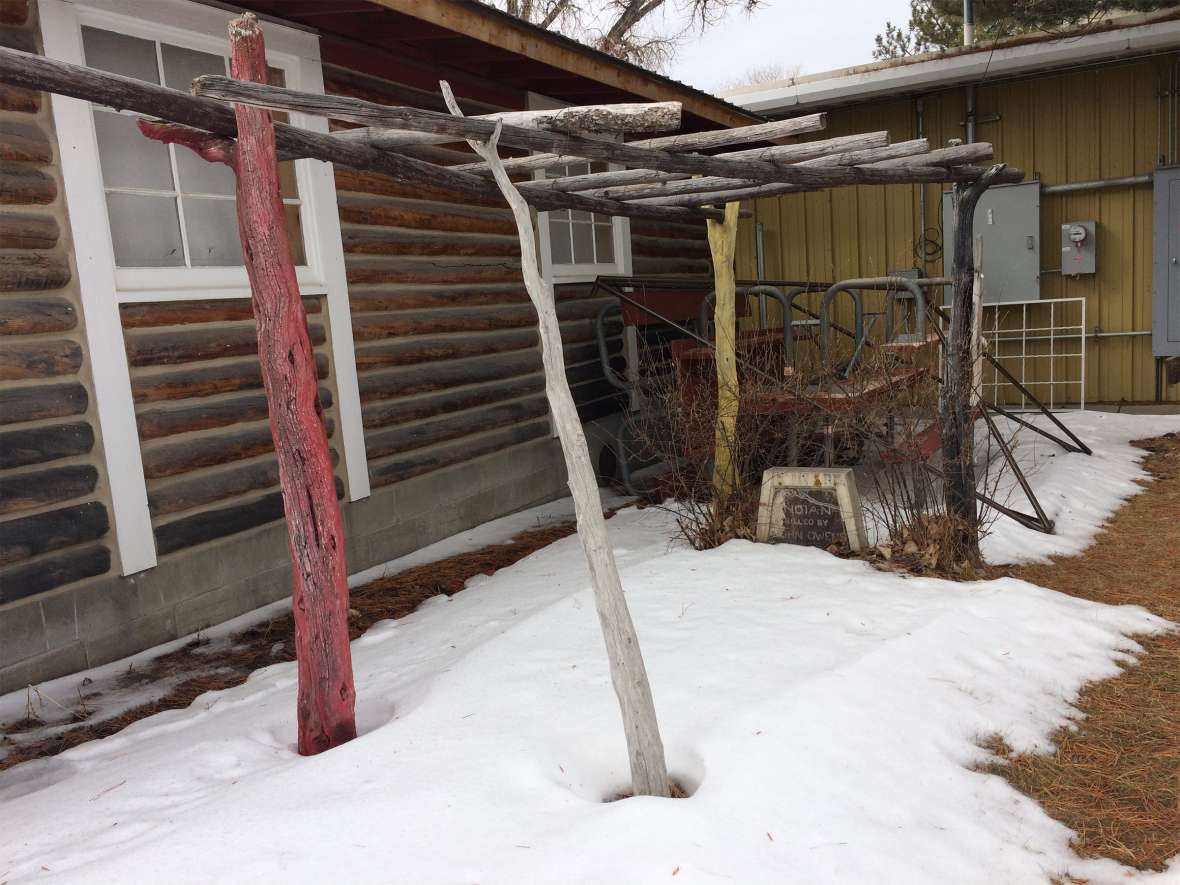
Resources
Primary Sources
- Bishop, L.C. Statement by L.C. Bishop for Record in University of Wyoming Archives. Black Kettle Reburial file, Wyoming Pioneer Memorial Museum, Douglas, Wyo. (Hereafter WPMM).
- “Burial of Black Kettle.” Black Kettle Reburial file, WPMM.
- “Sheriffs Battle Indians on Lightning Creek.” Wyoming Pioneer, September-October 1941, WPMM.
- Thomson, Dave. Letter to Andrew [no last name indicated]. Black Kettle Reburial file, WPMM.
- Other documents pertaining to this story, housed at the WPMM, are in the Black Kettle Reburial file and the Lightning Creek and Black Kettle file.
Secondary Sources
- Jackson, Joe. Black Elk: The Life of an American Visionary. New York : Farrar, Straus and Giroux, 2016. The account of Black Elk’s work with the Duhamels at their Sitting Bull Caverns attraction in the 1930s is on pp. 441-447.
- Neihardt, John G., Black Elk. Black Elk Speaks: Being the Life Story of a Holy Man of the Oglala Sioux. Lincoln, Neb.: University of Nebraska Press, 1961.
- Van Pelt, Lori. “Trouble at Lightning Creek: ‘A Stained Page in Wyoming’s History.’” WyoHistory.org, accessed March 10, 2021 at /encyclopedia/trouble-lightning-creek-stained-page-wyomings-history.
- Warren, Louis S. Buffalo Bill’s America. N.Y.: Random House, 2006, 413-414.
Illustrations
- Special thanks to the staff of the Natrona County Library reference desk for the image of the Casper Tribune-Herald Sept. 11, 1938.
- The photo of Black Elk and his family is from Wikipedia. Used with thanks.
- The rest of the photos are by WyoHistory.org Editor Tom Rea.
